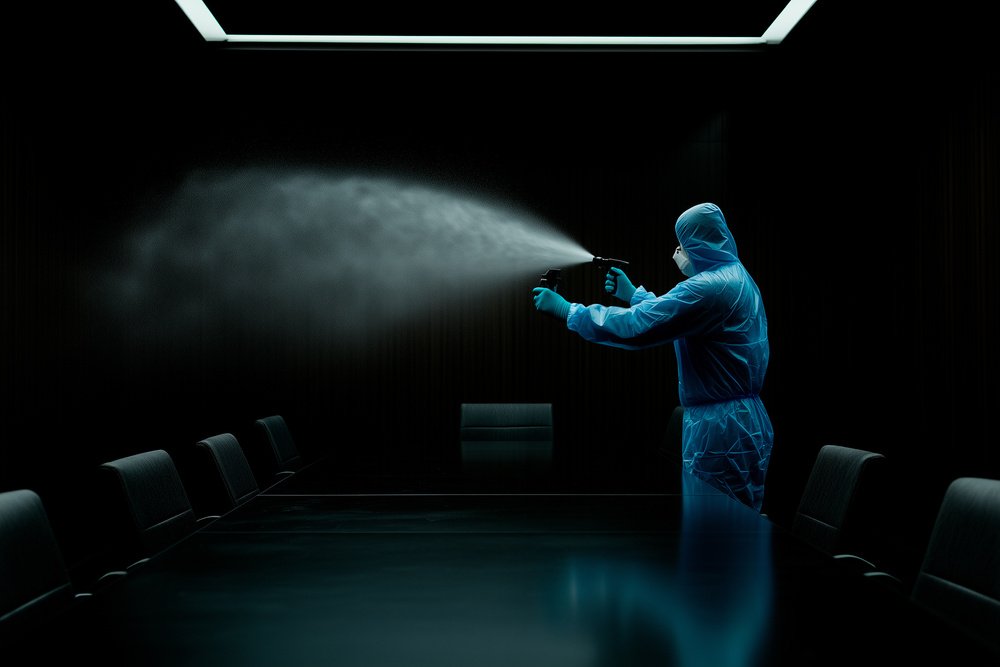While it is possible to clean some commercial environments without disinfecting them, disinfection is a service preferred by most commercial cleaning clients. Disinfecting helps reduce the spread of germs by eliminating bacteria, viruses, and fungi across various surfaces. There are multiple ways to disinfect, including a process known as electrostatic disinfection.
Manual disinfection is the most common method by which surfaces are addressed. It involves spraying a surface with an EPA-registered disinfectant and then wiping down that surface with a cleaning cloth. Manual disinfection is suitable for the broadest range of surfaces we encounter. But sometimes manual disinfection is not enough. Sometimes a space requires electrostatic disinfection.
A Basic Definition
Electrostatic disinfection is different because it involves electricity. Cleaning crews use a specialized sprayer that applies an electrical charge to the liquid as it flows through the spray nozzle. Droplets emerging from the sprayer carry a positive charge, making them attractive to surfaces that are negatively charged or neutral. For purposes of illustration, it is a lot like putting a magnet on a refrigerator.
Because the droplets and surfaces are attracted to one another, the electrically charged disinfectant tends to wrap around and more evenly coat. Individual droplets repel one another, which is the key to applying an even coat of disinfectant across an entire surface. The disinfectant doesn’t pool. It also does not bead up.
After the disinfectant has time to do its work, it can be wiped away with a cleaning cloth. However, it doesn’t have to be. The disinfectant can be allowed to dry in place without worry. You end up with a clean and totally disinfected surface.
Why It’s a Good Choice
Why would an organization choose electrostatic disinfection over manual cleaning? There are plenty of potential reasons. Here are the top four:
1. More Complete Coverage
He electrically charged droplets of disinfectant ‘seek out’ and attach themselves to surfaces. And because the droplets naturally repel one another, they are more likely to find themselves getting into pores, cracks, nooks, and crannies. An electrostatically charged disinfectant is ideal for surfaces that are hard to reach.
2. More Efficient Disinfecting
Electrostatic disinfection is more efficient in large and complex spaces where cleaning crews can get unnecessarily bogged down with manual processes. Fewer people can clean and disinfect larger spaces in less time and with more thorough results.
3. Reduced Chemical Consumption
Electrostatically charged disinfecting is more efficient because it coats more thoroughly and evenly. The result is a more efficient use of cleaning chemicals. Cleaning crews ultimately use less; they reduce waste by not using more chemicals than necessary for a given space.
4. Enhanced Infection Control
Although manual disinfection also kills bacteria, viruses, and fungi, electrostatic disinfection is more thorough. Therefore, it does a better job of dealing with those unwanted pathogens. A cleaning provider is able to offer enhanced infection control and the confidence that comes with it.
The Right Option For Your Facility
Manual and electrostatic disinfection are just two options for dealing with bacteria, viruses, and fungi. Both have their appropriate applications. Yet they are not the only methods available. There are other ways to disinfect, including ultraviolet light, ozone, and even high-temperature steam. The big question is which option is right for your facility?
For so many organizations, disinfecting is no longer an option. It is a must. Fortunately, commercial cleaning companies can offer a complete selection of disinfecting options. Among them is electrostatic disinfection. Thanks to the nature of electrical charges, electrostatic disinfection offers a thorough, easy, and efficient way to disinfect large and complex spaces.


